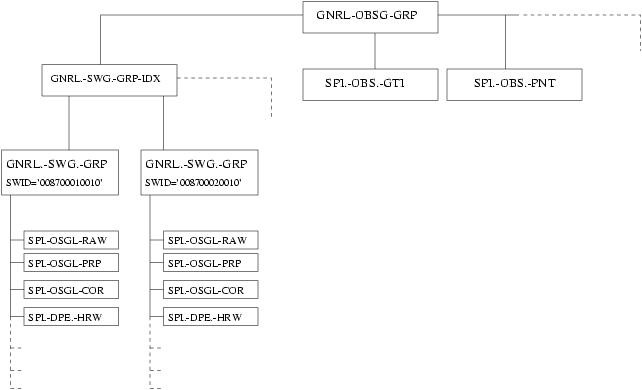 |
The highest level of data organization within this model is the data object, or object. A data object is a compound structure consisting of one or more atomic structures known as data elements. Within a data object, the data elements are arranged in a hierarchy that often reflects the organization of a data set (e.g., science window, observation) where each data element contains a specific portion of the data set (e.g., spectra, event list, auxiliary information), and are distributed across a number of data files. For this reason, users may in practice often think of a data object as a data set.
The hierarchical relationship of data elements comprising a data object is analogous to a tree structure. Each tree node (or branch) corresponds to a parent element and its leaves are children elements of the parent element. The root of the tree structure, the only element without parents, is known as the top-level element of the object. The example of such a tree is given in Figure 10.